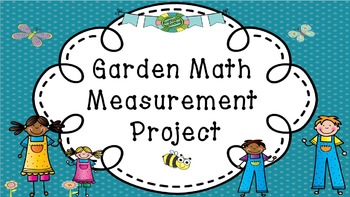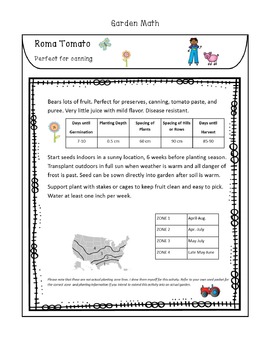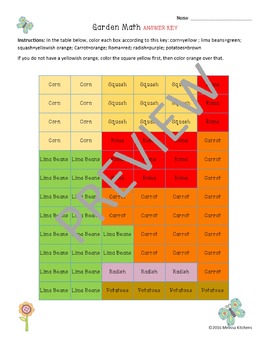SPRING Garden Math Measurement
Morning Coffee
8 Followers
Grade Levels
3rd - 5th
Subjects
Resource Type
Standards
CCSS3.MD.C.5
CCSS3.MD.D.8
CCSS4.MD.A.1
CCSS4.MD.A.2
CCSS5.MD.A.1
Formats Included
- Publisher files
Pages
33 pages
Morning Coffee
8 Followers
Description
This is a great project for anytime of year, but especially spring! It incorporates Math (conversion of measurements in customary and metric units; perimeter and area in both customary and metric units; fractions; simplifying fractions) and optional Science and Writing activities (keeping a Science journal of the seedlings' growth, and a choice of 2 writing prompts). This project can be used with just the materials given, OR you can opt to actually plant seeds and let the students create a small garden. The activities can be completed in 1 week, or over a period of several weeks if done in Centers.
Total Pages
33 pages
Answer Key
Included
Teaching Duration
Other
Report this resource to TPT
Reported resources will be reviewed by our team. Report this resource to let us know if this resource violates TPT’s content guidelines.
Standards
to see state-specific standards (only available in the US).
CCSS3.MD.C.5
Recognize area as an attribute of plane figures and understand concepts of area measurement.
CCSS3.MD.D.8
Solve real world and mathematical problems involving perimeters of polygons, including finding the perimeter given the side lengths, finding an unknown side length, and exhibiting rectangles with the same perimeter and different areas or with the same area and different perimeters.
CCSS4.MD.A.1
Know relative sizes of measurement units within one system of units including km, m, cm; kg, g; lb, oz.; l, ml; hr, min, sec. Within a single system of measurement, express measurements in a larger unit in terms of a smaller unit. Record measurement equivalents in a two-column table. For example, know that 1 ft is 12 times as long as 1 in. Express the length of a 4 ft snake as 48 in. Generate a conversion table for feet and inches listing the number pairs (1, 12), (2, 24), (3, 36),...
CCSS4.MD.A.2
Use the four operations to solve word problems involving distances, intervals of time, liquid volumes, masses of objects, and money, including problems involving simple fractions or decimals, and problems that require expressing measurements given in a larger unit in terms of a smaller unit. Represent measurement quantities using diagrams such as number line diagrams that feature a measurement scale.
CCSS5.MD.A.1
Convert among different-sized standard measurement units within a given measurement system (e.g., convert 5 cm to 0.05 m), and use these conversions in solving multi-step, real world problems.





